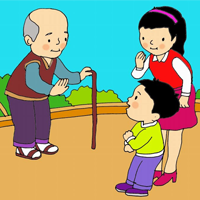Đề thi thử môn Anh THPT Quốc gia (Giải thích chi tiết Key)
Đề thi THPT Quốc gia môn Tiếng Anh có đáp án - Tài liệu luyện thi THPT Quốc gia
Đề thi thử môn Anh THPT Quốc gia năm 2016 (Giải thích chi tiết Key) là mẫu đề thi thử THPT Quốc gia năm 2016 mới nhất do VnDoc sưu tầm. Kính mời các quý thầy cô và các em học sinh tham khảo đề thi để thử sức và chuẩn bị tốt nhất cho kỳ thi THPT Quốc gia.
Đề thi thử THPT Quốc Gia môn Tiếng Anh trường THPT Liên Sơn, Vĩnh Phúc năm 2015
Đề thi thử THPT Quốc gia năm 2016 môn Tiếng Anh Sở GD-ĐT Nam Định
Đề thi thử THPT Quốc gia môn Tiếng Anh năm 2016 Sở GD-ĐT Bình Phước
- A. PHẦN TRẮC NGHIỆM
- I. Mark the letter A, B, C, D on your answer sheet to indicate the word whose underlined part differs from the other three in pronunciation in each of the following questions.
- Question 1:
Đáp án là D.
Từ caring có phần gạch chân được phát âm là /eə/, các từ còn lại có phần gạch chân được phát âm là /ə/. - Question 2:
Đáp án là C.
Từ digest có phần gạch chân được phát âm là /t/, các từ còn lại có phần gạch chân không được phát âm. - Question 3:
Đáp án là B.
Từ none có phần gạch chân được phát âm là /ʌ/, các từ còn lại có phần gạch chân được phát âm là /ɒ/. - II. Mark the letter A, B, C, D on your answer sheet to indicate the word that differs from the other three in the position of the primary in each of the following questions.
- Question 4:Đáp án là C.
Từ eradicate nhấn âm tiết thứ hai, các từ còn lại nhấn âm thứ ba. - Question 5:Đáp án là A.
Từ pioneer nhấn âm tiết thứ ba, các từ còn lại nhấn âm thứ hai. - III. Mark the letter A, B, C, D on your answer sheet to indicate the correct answer to each of the following questions.
- Question 6: You saved my life. I thank you from the ____ of my heart.Đáp án là B.
From the bottom of one‟s heart: tận đáy lòng .. - Question 7: Did you have an argument with Francis?” “If you had been there, you ____ the same.”Đáp án là B.
Câu điều kiện loại III: If + S + had + PII, S + would + have + PII - Question 8: If orders keep coming in like this, I‟ll have to ____ more staff.
Đáp án là D. take on: Nhận vào làm, thuê, mướn (người làm...)
Các cụm còn lại: give up: từ bỏ, add in: thêm vào; gain on: Tranh thủ được lòng (ai) - Question 9: He couldn't rest or sleep because ____ too much coffee.
Because + clause → chỉ đáp án D là chấp nhận được
Dịch: Anh ta không thể nghỉ ngơi hay ngủ được bởi vì anh ta đã uống quá nhiều café. - Question 10: There is a very clear relationship ____ education and academic success.Đáp án là B. between …. and …..: giữa ….. và ….
- Question 11: Everyone should travel; it really ____ the mind.Đáp án là A. Broaden the mind – mở rộng hiểu biết
- Question 12: Many people believe that violent computer games can have a harmful ____ on children.Đáp án là B. Cấu trúc: have a effect on …: có ảnh hưởng đến…..
- Question 13: Navigation around the globe is a lot simpler thanks to the information we receive from ____.
Đáp án là A. satellites: vệ tinh
Các từ còn lại: station: trạm, bến; system: hệ thống; shuttles: hê thống giao thông vận tải tuyến đường ngắn. - Question 14: What do you think ____ me?
S+ think (+ that) +clause → câu thiếu chủ ngữ và động từ trong mệnh đề sau “think”. → đáp án phù hợp nhất là B.
- Question 15: When you do something, you should _________.
Đáp án là A. weigh up the pros and cons: cân nhắc thuận lợi và bất lợi
Nghĩa các cụm còn lại:
get through to st: đạt được một bậc cao hơn trong cuộc thi đấu
get through to sb: nối máy được với ai
turn over a new leaf: cải tà quy chính - Question 16: Something ____ happened or they would be here by now.
Đáp án là C. must have done: dùng để diễn tả hành động sự việc chắc chắn đã xảy ra trong quá khứ, thường là có cơ sở.
Dịch: Có thứ gì đó đã xảy ra hoặc họ sẽ đến đây ngay bây giờ. - Question 17: We were told to put it where it was usually ____.
Đáp án là D. stored: được bảo quản, lưu trữ
Dịch: Chúng tôi được bảo là để nó vào nơi mà nó được bảo quản bình thường.
Các từ còn lại: belong to: thuộc về; fit: vừa vặn, hợp; - Question 18: A demonstration is an act of showing by giving proof or ____evidence.
Đáp án là D. evidence: bằng chứng → danh từ không đếm được→ A và B loại. Trường hợp này cũng không dùng "the", theo cấu trúc song song khi dùng liên từ "or", proof không dùng "the" → evidence cũng không dùng "the".
- Question 19: She liked to say that she was just one of his ____ happy customers.
Đáp án là C. one of his many happy customers: một trong những khách hàng vui vẻ của anh ta.
Xét về hợp nghĩa không chọn A và D được . all : tất cả; some: một vài
Xét về hình thức, B cũng không chọn được vì không ai dùng “one of his lots of ... - Question 20: I asked Meg earlier if she thought it would rain and she said “I ____.”
Cấu trúc thể hiện sự đồng tình “I hope so.”, cấu trúc thể hiện sự không đồng tình “I hope not.” → Đáp án là C.
- Question 21: I'm ____ a swimmer as my sister.
Đáp án là C. Cấu trúc so sánh ngang bằng: S + be + as + adj + a/an + N + as + O. Phủ định thêm “not” vào sau “be”.
- Question 22: We decided to ____ in Athens for a few days on our way home.
Đáp án là A. stop over: ngừng lại (trong một cuộc đi)
Các cụm vong lại: put up:đăt lên; set up:dựng lên; close down: đóng cửa hẳn (không buôn bán, sản xuất) - Question 23: Some of the girls in my group tease me because I don't wear makeup but I don't ____.Đáp án là B. “I don't care.” – Tôi không quan tâm.
- Question 24: There is no point in trying to warn him of the danger. He will just ____ a deaf car.Đáp án là B. Cấu trúc: Turn a deaf ear: từ chối lắng nghe hay đáp lời một tuyên bố hay yêu cầu.
- IV. Mark the letter A, B, C, D on your answer sheet to indicate the word(s) OPPOSITE in meaning to the underlined word(s) in each of the following questions
- Question 25:Prior to World War I, 20 percent of American homes had electricity.
Đáp án là C. Prior to = Before: trước khi >< After: Sau khi
During: trong, trong suốt ( quá trình ) …, Despite: mặc dù - Question 26:The flowering pebble is a plant that looks like a stone and grows in arid areas.
Đáp án là B. arid: khô cằn (đất) >< damp: ẩm, ẩm ướt
Các từ còn lại: deserted: hoang vắng, hiu quạnh; dry: khô, barren: cằn cỗi (đất) - V. Mark the letter A, B, C, D to indicate the word(s) SIMILAR in meaning to the underlined word(s) in each of the following questions.
- Question 27:Originally developed for Southern California, the Richter Scale was expanded for worldwide use.
Đáp án là B. expanded = enlarged: được mở rộng
Các từ còn lại: prolonged: được kéo dài ra; minuscule: nhỏ xíu, rất nhỏ; swamped: bị ngập (nước) - Question 28:The jute, a relative of the basswood trees, flourishes in warm humid climates.
Đáp án là C. flourish: mọc sum suê ( cây ) = thrive: lớn nhanh, phát triển mạnh
Các từ còn lại: amplify: mở rộng; swell: làm phình to lên; prolong: kéo dài ra - Question 29:Excessive amounts of lead in the air can decrease a child‟s intelligence.
Đáp án là B. decrease = diminish: làm giảm bớt
Các từ còn lại: boom: âm vang; abate: làm dịu đi, làm giảm bớt (nỗi đau, cơn đau); swamp: làm nhập nước. - VI. Mark the letter A, B, C, D on your answer sheet to indicate the underlined part that needs correction in each of the following questions
- Question 30:Playing jokes on April Fool's Day is common in many regions, although none knows how the tradition began.Đáp án là B. none → no one
- Question 31:Farmers in all parts of Asia own their own farms, but tenant farmers are also practiced.Đáp án là D. farmers are → farming is.
- Question 32:Japanese initially used jeweled objects to decorate swords and ceremonial items.Đáp án là A. Japanese → The Japanese
- Question 33:Because of attitudes shape behavior, psychologists want to find out how opinions are formed.Đáp án là A. Because of → Because
- Question 34:As the roles of people in society change, so does the rules of conduct in certain situations.Đáp án là B. so does → so do
- VII. Read the following passage and mark the letter A, B, C, D on your answer sheet to indicate the correct word or phrase that best fits each of the numbered blanks.
DenmarkDenmark is the smallest and most southerly of the countries of Scandinavia. (35) ____ lie in northern Europe. It is probably best (36) ____ for being home to the powerful Vikings, (37) ____ 1,000 years ago. Denmark is a small country, with limited natural (38) ____. Nevertheless, it has become one of the richest countries in the (39) ____.Denmark has its own (40) ____ culture and traditions, and a tongue−twisting language, which includes several different dialects. Although Denmark is a member (41) ____ the European Union, recently it has been reluctant to work more closely with the EU and give up (42) ____ of its independence.Wealth in Denmark is shared out more evenly than in most countries, because people pay high taxes. Many workers pay more than 50 percent of their wages in tax. The money is used to pay (43)____ a welfare system which includes health care, benefits for the unemployed and the elderly, and public services. Compared to the rest of the world, it is (44) ____ to become either very rich or very poor in Denmark. - Question 35: ________(35)Đáp án là C. which: đại từ quan hệ thay thế cho “Scandinavia”
- Question 36: ________(36)Đáp án là B. best−known hình thức so sánh hơn nhất của well known. Be well known for: nổi tiếng về …
- Question 37: ________(37)Đáp án là A. over 1,000 years ago: trên một nghìn năm trước. Ta có, over/under + số đếm: trên /dưới ….
- Question 38: ________(38)
Đáp án là A. natural resources: tài nguyên thiên nhiên
Các từ còn lại: features: những đặc điểm; nature: tự nhiên, bản chất (không có dạng số nhiều); sources: các nguồn - Question 39: ________(39)
Đáp án là D. in the world: trên thế giới
Các từ còn lại: earth: trái đất,land: đất liền; space: không gian - Question 40: ________(40)
Đáp án là B. own distinctive culture and traditions: nền văn hóa và truyền thống đặc biệt riêng
Các từ còn lại: distant: xa trong không gian và thời gian; disliked: không được yêu thích; disinterested: không vụ lợi - Question 41: ________(41)Đáp án là D. a member of the European Union: một thành viên của Liên minh châu Âu
- Question 42: ________(42)
Dùng phương pháp loại trừ:
Every và very không có cấu trúc theo sau là giới từ of. Many + of + Ns, nhưng “independence” là danh từ không đếm được → Đáp án là D. some of + ..Ns/ N (uncountable) - Question 43: ________(43)Đáp án là B. pay for: trả (tiền) cho …
- Question 44: ________(44)
Dựa vào nghĩa chọn đáp án là C. difficult: khó
Các từ còn lại : impossible: không thể; simple: đơn giản, easy: dễ - VIII. Read the following passage and mark the letter A, B, C, D on your answer sheet to indicate the correct answer to each of the questions.
Arthur DoveArthur Dove was an abstract nature painter whose work was radically different and underappreciated in the American art scene[1] In fact, Dove was the first American artist to paint in an entirely abstract manner. [2] He painted a set of six abstract works around 1910, prior to the European artist Wassily Kandinsky‟s famous abstract compositions. [3] Kandinsky‟s abstract work, however, complemented the cultural context in Europe, and was therefore appreciated. Dove‟s work had no similar cultural context in America. [4]Overall, Dove's abstract paintings did nothing to change Amercican art. His work was not once but twice orphaned: by the general indifference of the Amercican public, and by his own reclusive nature. Nevertheless, Dove's abstract paintings remain interesting compositions on nature.Dove once wrote, “I would like to make something that is real in itself, or to be real without looking like something else, that does not remind anyone of any other thing, and that does not have to be explained, like the letter A for instance.” - Question 45: What is the main purpose of this passage?
Đáp án là D. Giải thích tại sao những bức vẽ của Dove không thay đổi được viễn cảnh nền nghệ thuật nước Mỹ.
Một số lý do đề cập:
− Dove‟s work had no similar cultural context in America.
− His work was not once but twice orphaned: by the general indifference of the Amercican public, and by his own reclusive nature. - Question 46: According to the passage, why weren't Dove's works noticed?
Đáp án là C. Ý trong bài so sánh giữa tác phẩm được đề cao của Kandinsky và Dove: Kandinsky's abstract work, however, complemented the cultural context in Europe, and was therefore appreciated. Dove's work had no similar cultural context in America.
- Question 47: The word "orphaned" in the passage is closest in meaning to ____.
Đáp án là B. orphaned = ignored: bị bỏ qua, không được để ý đến
Các từ còn lại: criticized: bị phê bình; valued: được coi trọng; destroyed: bị phá hủy - Question 48: According to the passage, which of the following is not true about Dove and Kandinsky?
Đáp án là B. Ý trong bài cho thấy Dove là người Mỹ, còn Kandinsky là người châu Âu : In fact, Dove was the first American artist to paint in an entirely abstract manner. He painted a set of six abstract works around 1910, prior to the European artist Wassily Kandinsky‟s famous abstract compositions.
- Question 49: The word "indifference" in the passage is the opposite of ____.
Đáp án là B. indịfference : thờ ơ, không quan tâm >< interest: quan tâm,
Các từ còn lại dislike: không thích; joy: niềm vui; ignorance: sự lờ đi, không để ý đến. - Question 50: Which of the following can be inferred from the reading?
Đáp án là B. Có thể thấy, đoạn 2 nói về sự khởi đầu không tốt của Dove, nhưng đoạn 2, các tác phẩm của ông nhận được sự quan tâm hơn, dựa vào câu: Dove's abstract paintings remain interesting compositions on nature.
- Question 51: Which is the best place for the following sentence?“This, however, did not make him famous.”
This, however, did not make him famous. − Điều này, tuy nhiên, đã không làm cho ông nổi tiếng. → Đáp án là C. [2] He painted a set of six abstract works around 1910, prior to the European artist Wassily Kandinsky's famous abstract compositions. − Ông đã vẽ một bộ sáu tác phẩm trừu tượng khoảng năm 1910, trước những tác phẩm trừu tượng nổi tiếng của họa sĩ châu Âu Wassily Kandinsky.
- Question 52: The word “reclusive" in the passage is closest in meaning to ____ .
Đáp án là C, reclusive = shy: bẽn lẽn, rụt rè
Các từ còn lại: charming:duyên dáng; sociable: thân thiện; generous: hào phóng - Question 53: Which of the following best expresses the meaning of the quotation?
Câu nói của Dove: Tôi muốn làm một cái gì đó là có thật trong chính nó, hoặc là thực mà không giống như cái gì khác, điều đó không làm cho bất cứ ai nhớ hoặc biết về bất kỳ điều khác, và điều đó không phải được giải thích, giống như chữ A chẳng hạn.
→ Đáp án là A. Dove muốn tạo ra tác phẩm nghệ thuật mà là hoàn toàn độc đáo. - Question 54: The paragraph following the passage world most probably be _____.
Đoạn văn đã đề cập đến lý do tại tác phẩm không được đề cao trong những giai đoạn đầu của nghệ thuật vẽ tranh trừu tượng.
→ Có thể suy ra, đoạn văn tiếp theo sẽ nói về những bức vẽ thành công nhất của Dove → Đáp án là D.
A. thảo luận về lý do tại sao tác phẩm của Dove bị lờ đi → trong bài đã đề cập
B. Thảo luận về cảnh nghệ thuật châu Âu → cái này không bám sát tới Dove.
C. Thảo luận về sự khác nhau giữa các tác phẩm của Dove và Kandinsky → ý này cũng đã được đề cập. - IX. Read the following passage and mark the letter A, B, C, D on your answer sheet to indicate the correct answer to each of the questions
Television
An American TV network has had an international hit with the drama "24”. a thriller known for its suspense and often graphic violence. Over the past year, controversy has surrounded the series because of its portrayal of Muslim terrorists and its frequent scenes of torture. But the content of “24” is not the only thing that would have been unthinkable on prime−time television 20 years ago. Its form also represents a major change in modem TV: during each episode's 44 minutes − a real−time hour, minus 16 minutes for commercials – the show connects the lives of 21 different characters, each with their own personalities and specific relationships with other characters. Nine different story lines (or “threads") arc depicted, each involving events and information revealed in previous episodes. [ I ][2] For years many people have assumed that popular culture is in a state of decline rapidly degenerating into “junk culture" with no worthwhile purpose. But an interesting new book challenges that assumption. “Everything Bad is Good for You: How Today‟s Popular Culture Is Actually Making Us Smarter," by Steven Johnson, makes a persuasive argument that today‟s complex TV dramas and other pop culture Products gives healthy mental exercise. He calls the use or complex, interwoven plot lines involving multiple characters “multi−threading”, and it is a new and growing phenomenon in TV To keep up with shows like “24", he points out, you must “pay attention, make inferences, track shifting social relationships", and these cognitive challenges are changịng our mental development for the better. [3][4] The most obvious change in the last five years of narrative entertainment is the rise of reality TV, Surely, you might be thinking, watching “Survivor" or “The Bachelor” cannot possibly raise anyone's IQ “Survivor” is now in its tenth season, and “The Bachelor” is in its seventh. But as Johnson tells us lately “even the junk has improved”. The new reality shows are like games: they arc series of competitive tests, each more challenging than the last, and with rules that must be learned as you play. On “Survivor" for instance, the participants and the audience know the general objective of the game but each episode brings new challenges that require quick thinking. Success in these games calls for the intellectual labor of finding the weak spots in the rules and in your opponents. This labor is done not just by the stars of the shows but the viewers at home as well. This is what makes these shows such fun to watch − the human mind enjoys being challenged. As Johnson writes, “There‟s real pleasure ... in solving puzzles, detecting patterns or understanding a complex narrative system." - Question 55: What is the topic of the passage?
Đáp án là B. Những lợi ích của TV ngày hôm nay. Có thể thấy, đoạn văn liệt kê một số chương trình và lợi ích của nó. Ví dụ:
− ... today's complex TV dramas and other pop culture Products gives healthy mental exercise.
− ….This is what makes these shows such fun to watch − the human mind enjoys being challenged. - Question 56: Which is the best place for the following sentence?"It is not only hour−long dramas that make us smarter."
Đáp án là D. Ý thể hiện: you might be thinking, watching "Survivor" or "The Bachelor" cannot possibly raise anyone's IQ "Survivor" is now in its tenth season, and "The Bachelor" is in its seventh. But as Johnson tells us lately "even the junk has improved"….
- Question 57: The word "each" in paragraph I refers to ____. .
Đáp án là A. Nine different story lines (or "threads") arc depicted, eachinvolving events and information revealed in previous episodes.
- Question 58: The author begins the passage by discussing “24” in order to ____.
Đáp án là B. Đoạn văn nói về “24” để nói về sự phức tạp của TV, thể hiện ở chi tiết: Its form also represents a major change in modem TV: during each episode‟s 44 minutes − a real−time hour, minus 16 minutes for commercials – the show connects the lives of 21 different characters, [….] each involving events and information revealed in previous episodes
- Question 59: It can be inferred that the author of the passage
Đáp án là D. Tác giả đồng tình với một số quan điểm của Johnson, nhưng không phải tất cả đươc thể hiện ở đoạn 2 và 3.
- Question 60: According to the passage, Johnson's book argues all following except that ____.
Đáp án là D.
A được đề cập: .. popular culture is in a state of decline rapidly
B được đề cập: these cognitive challenges are changing our mental development for the better.
C được đề cập: the participants and the audience know the general objective of the game but each episode brings new challenges that require quick thinking… This is what makes these shows such fun to watch − the human mind enjoys being challenged. - Question 61: "Multi−threading" in TV is a new type of ____.Đáp án là A. Ý trong bài: … interwoven plot lines involving multiple characters “multi−threading”
- Question 62: The author mentions "junk culture” in paragraph 2 in order to ____.
Đáp án là B. Ý thể hiện sự tương phản qua từ “but”: For years many people have assumed that popular culture is in a state of decline rapidly degenerating into “junk culture" with no worthwhile purpose. But an interesting new book challenges that assumption…
- Question 63: The word “they" in paragraph 3 refers to ____.
Đáp án là C. Ý trong bài: The new reality shows are like games: they are series of competitive tests, each more challenging than the last, and with rules that must be learned as you play.
- Question 64: The word "detecting" in paragraph 3 is closest in meaning to ____ .
Đáp án là D. detecting: tìm ra, khám phá ra = finding
Các từ còn lại: making: làm; admiring: khâm phục; remembering: nhớ - B. PHẦN TỰ LUẬNPart II. Complete the second sentence so that it has a similar meaning to the first sentence.
- Question 65: Students may not park here.=> Students are ............................................not allowed to park here not permitted to park here
- Question 66: We've written fifty per cent of the report already.=> Half ........................................................of the report has been writeen already
- Question 67: She didn't escape injury; she wasn't wearing a crash helmet.=> If only .......................................she had been wearing a cash helmet, she would have escaped injury she had worn a cash helmet, she would have escaped injury
- Question 68: Amy was bitten by a dog when she was very young and she still remembers it.=> Amy still remembers ..........................................being bitten by a dog when she was very young
- Question 69: “I shall return the day after tomorrow."=> His only comment ..................................was that he would return in two day's time
- Đề luận: About 140 words, write a paragraph about benefits of physical exercises.Bài viết tham khảo:Nobody can deny the benefits of sports and physical exercises. In fact, such sports as: swimming, jogging, jumping, playing tennis, football, basket − ball, volley − ball, skating, skiing etc bring us a well − proportioned body. When we practise a certain sport, our muscles are developed; blood circulates easily in blood vessels therefore we'll have a good appetite and a sound sleep As for me, my favourite sport is jogging in the morning and playing tennis in the afternoon. By practicing these sports regularly I always feel fit and never get sick. Health is much more precious than money. We can't lead a happy life if we are continually tortured by diseases. Try to keep a clear mind in a healthy body and get accustomed to regular practice of certain sports, we'll feel life worth living.
- Đáp án đúng của hệ thống
- Trả lời đúng của bạn
- Trả lời sai của bạn








